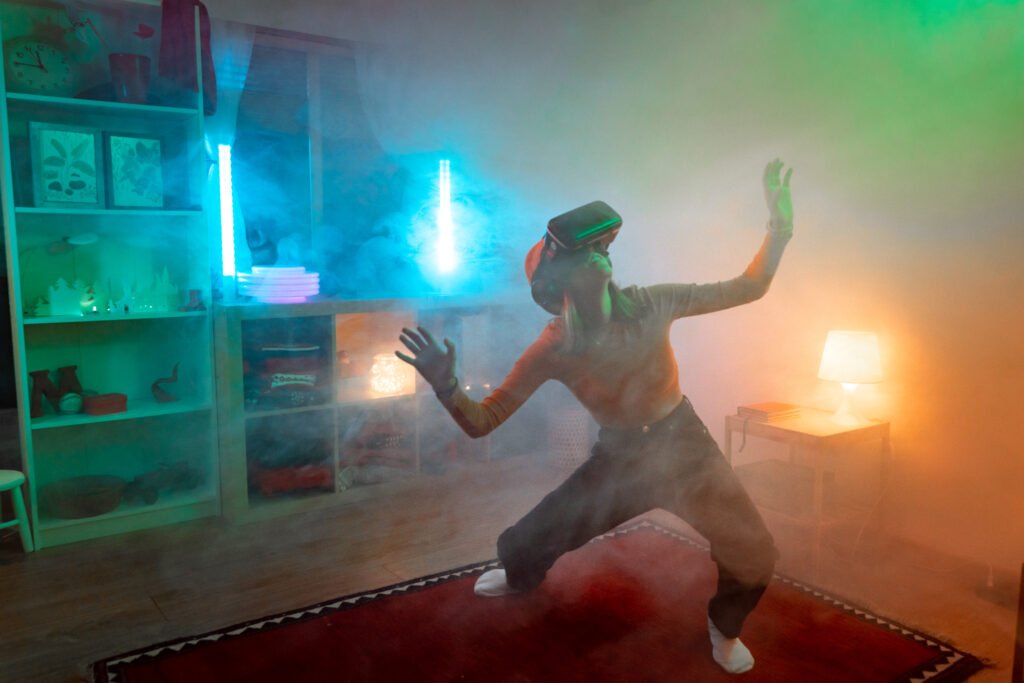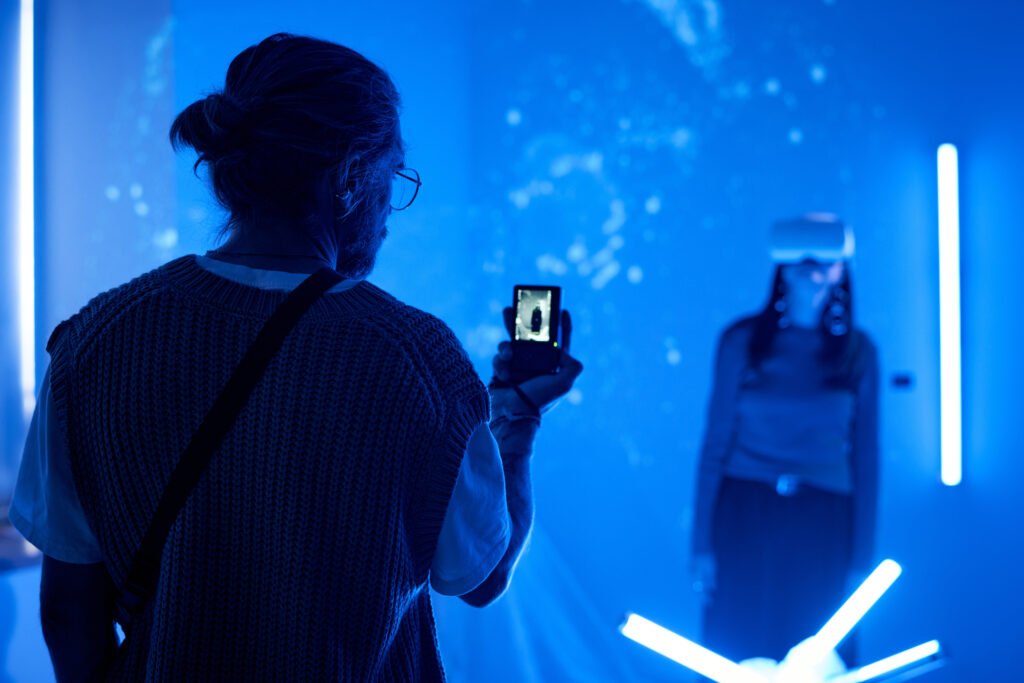Immersive installations turn artistic experience into something alive, sensory, and participatory. They break the traditional separation between viewer and artwork, creating environments where the public not only observes but becomes an active part of the process. Rather than contemplating from a distance, the visitor walks, listens, interacts, and feels — often with all senses engaged.
This kind of art gains strength at a time when presence is increasingly rare. Amid hyperconnectivity and everyday virtuality, immersive installations offer the chance to be truly present. They invite stillness, attention, and full involvement with space and aesthetics. That is why they represent one of the most powerful languages in contemporary art.
The Origins of Immersive Installations
Immersive installations have their roots in the 20th century, drawing influence from conceptual art, minimalism, and performance. A historical milestone is Yves Klein’s Le Vide (1958), in which he presented an entirely empty room, forcing the audience to confront space itself. Though not yet multisensory, the gesture already anticipated the dissolution of the artwork as object and the elevation of space as medium.

According to Installation Art: A Critical History (Bishop, 2005), installations became more immersive and interactive in the 1960s. Artists such as Bruce Nauman, James Turrell, and Yayoi Kusama created environments in which perception was central. Nauman used narrow corridors and disorienting sounds to provoke alertness or introspection.
These works made it clear that immersive installations were not only about visual aesthetics. They operated on a broader plane, involving physical sensation, memory, displacement, and time. The presence of the body — both the artist’s and the viewer’s — became essential.
Sensory Experience and Bodily Engagement
Unlike other forms of art, immersive installations require more than just looking. They demand movement, attention, and surrender. Often, the public must traverse spaces, touch surfaces, listen to specific sounds, and even experience changes in light, temperature, or scent.
Japanese artist Yayoi Kusama became a global icon of this approach. Her Infinity Rooms, for instance, transport visitors into mirrored universes filled with endless lights and reflections. Within these rooms, individuals lose their sense of physical boundaries, encountering sensations that evoke both wonder and disorientation.
Another key example is James Turrell, whose work treats light as material. In Aten Reign (2013), exhibited at the Guggenheim Museum in New York, he transformed the building’s atrium into a vortex of soft, shifting colors, immersing the viewer in a meditative state. The artwork did not impose — it enveloped, reshaping perceptions of time and body.
In contemporary contexts, immersive art has expanded through technologies such as augmented reality, sensors, and large-scale projections. The Japanese collective teamLab creates digital experiences where the visitor becomes part of an ever-changing sensory narrative. Museums like the MORI Building Digital Art Museum, in Tokyo, have become global references for this kind of creation.
The Art of Presence
In an age marked by constant distraction, immersive installations reclaim the value of presence. They not only capture attention but cultivate it. These are spaces where viewers are challenged to slow down, listen to the environment, and feel with their entire bodies. This is art to be lived, not merely viewed.
According to a study by the University of the Arts London (UAL, 2019), immersive art experiences stimulate stronger emotional and cognitive retention than traditional works. That’s because they engage multiple sensory layers and activate different brain areas, creating more lasting emotional memory.
By transforming space into language and the body into a tool for interpretation, immersive installations teach us to be more present in the world. They reveal that, in art, presence is not just being in a place — it is being in a state of attention, openness, and sensitivity.



